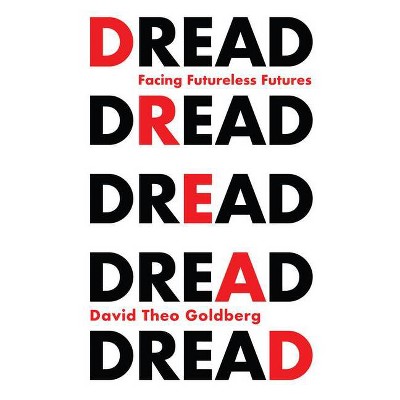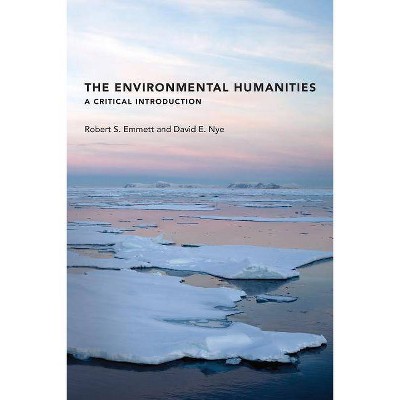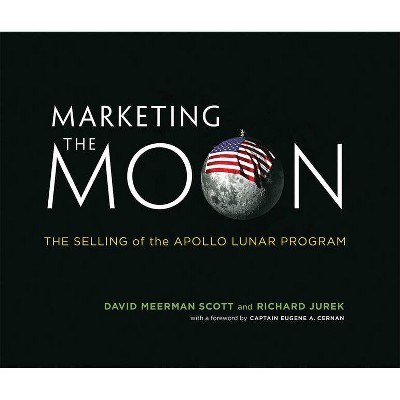Between Humanities and the Digital - (Mit Press) by Patrik Svensson & David Theo Goldberg (Hardcover)

Similar Products
Products of same category from the store
AllProduct info
<p/><br></br><p><b> About the Book </b></p></br></br>Scholars from a range of disciplines offer an expansive vision of the intersections between new information technologies and the humanities.<p/><br></br><p><b> Book Synopsis </b></p></br></br><b>Scholars from a range of disciplines offer an expansive vision of the intersections between new information technologies and the humanities.</b><p><i>Between Humanities and the Digital</i> offers an expansive vision of how the humanities engage with digital and information technology, providing a range of perspectives on a quickly evolving, contested, and exciting field. It documents the multiplicity of ways that humanities scholars have turned increasingly to digital and information technology as both a scholarly tool and a cultural object in need of analysis.</p><p>The contributors explore the state of the art in digital humanities from varied disciplinary perspectives, offer a sample of digitally inflected work that ranges from an analysis of computational literature to the collaborative development of a "Global Middle Ages" humanities platform, and examine new models for knowledge production and infrastructure. Their contributions show not only that the digital has prompted the humanities to move beyond traditional scholarly horizons, but also that the humanities have pushed the digital to become more than a narrowly technical application. </p><p><b>Contributors<br></b>Ian Bogost, Anne Cong-Huyen, Mats Dahlström, Cathy N. Davidson, Johanna Drucker, Amy E. Earhart, Kathleen Fitzpatrick, Maurizio Forte, Zephyr Frank, David Theo Goldberg, Jennifer González, Jo Guldi, N. Katherine Hayles, Geraldine Heng, Larissa Hjorth, Tim Hutchings, Henry Jenkins, Matthew Kirschenbaum, Cecilia Lindhé, Alan Liu, Elizabeth Losh, Tara McPherson, Chandra Mukerji, Nick Montfort, Jenna Ng, Bethany Nowviskie, Jennie Olofsson, Lisa Parks, Natalie Phillips, Todd Presner, Stephen Rachman, Patricia Seed, Nishant Shah, Ray Siemens, Jentery Sayers, Jonathan Sterne, Patrik Svensson, William G. Thomas III, Whitney Anne Trettien, Michael Widner</p><p/><br></br><p><b> About the Author </b></p></br></br>Patrik Svensson is Professor of Digital Humanities and former Director of HUMlab (2000¬2014) at Umeå University, Sweden. <p/>David Theo Goldberg is Director of the University of California Humanities Research Institute at the University of California, Irvine. <p/>William Thomas is a Senior Historian at History Associates, Inc., in Rockville, Maryland. <p/>Todd Presner is Ross Professor of Germanic Languages, Chair of the Digital Humanities Program, and Associate Dean of Digital Innovation at UCLA, where is is also a leader of the Urban Humanities Initiative, a UCLA program sponsored by the Andrew W. Mellon Foundation. <p/>Henry Jenkins is Provost's Professor of Communication, Journalism and Cinematic Arts at the Annenberg School for Communication, University of Southern California. He is the coeditor of <i>From Barbie to Mortal Kombat: Gender and Computer Games</i> (MIT Press, 1998). <p/>Johanna Drucker, book artist, visual theorist, and cultural critic, is Martin and Bernard Breslauer Professor in the Department of Information Studies at the Graduate School of Education and Information Studies at the University of California, Los Angeles. <p/>Ian Bogost is Ivan Allen College Distinguished Chair in Media Studies and Professor of Interactive Computing at the Georgia Institute of Technology, a Founding Partner at Persuasive Games LLC, and the coauthor of <i>Newsgames: Journalism at Play </i>(MIT Press, 2010). <p/>Cathy N. Davidson is the John Hope Franklin Humanities Institute Professor of Interdisciplinary Studies and Ruth F. Devarney Professor of English at Duke University. <p/>David Theo Goldberg is Director of the University of California Humanities Research Institute at the University of California, Irvine. <p/>Nick Montfort is Professor of Digital Media at MIT. He is the author of <i>Twisty Little Passages: An Approach to Interactive Fiction </i>and E<i>xploratory Programming for the Arts and Humanities</i>; the coauthor of <i>Racing the Beam: The Atari Video Computer System </i>and 1<i>0 PRINT CHR$(205.5+RND(1)); GOTO 10</i>; and the coeditor of <i>The New Media Reader</i> (all published by the MIT Press). <p/>Larissa Hjorth is Distinguished Professor and Director of Design and Creative Practice at RMIT University in Melbourne. She is coauthor of <i>Screen Ecologies</i> (MIT Press). <p/>Patrik Svensson is Professor of Digital Humanities and former Director of HUMlab (2000¬2014) at Umeå University, Sweden. <p/>Matthew G. Kirschenbaum is Associate Professor in the Department of English at the University of Maryland and the author of the award-winning <i>Mechanisms: New Media and the Forensic Imagination</i> (MIT Press). <p/>Elizabeth Losh directs the Culture, Art, and Technology Program at Sixth College at the University of California, San Diego. She is the author of<i> Virtualpolitik: An Electronic History of Government Media-Making in a Time of War, Scandal, Disaster, Miscommunication, and Mistakes</i> (MIT Press) and the coauthor of<i> Understanding Rhetoric: A Graphic Guide to Writing</i>. <p/>Jennifer A. González is Associate Professor in the History of Art and Visual Culture Department at the University of California, Santa Cruz. Her essays and reviews have appeared in <i>Frieze, World Art, Diacritics, Art Journal, Bomb, </i> numerous exhibition catalogs, and anthologies, including <i>With Other Eyes: Looking at Race and Gender in Visual Culture</i> and <i>Race in Cyberspace.</i> <p/>Tara McPherson is Associate Professor in the School of Cinematic Arts at the University of Southern California. <p/>N. Katherine Hayles is Professor of English and Design/Media Arts at the University of California at Los Angeles.
Price History
Price Archive shows prices from various stores, lets you see history and find the cheapest. There is no actual sale on the website. For all support, inquiry and suggestion messagescommunication@pricearchive.us




















